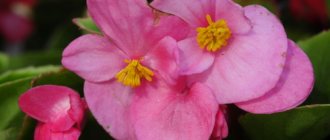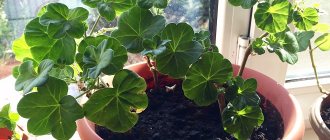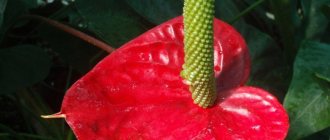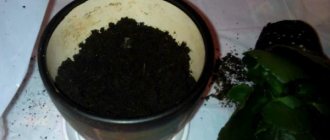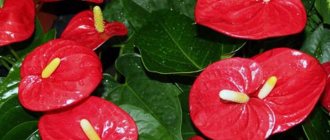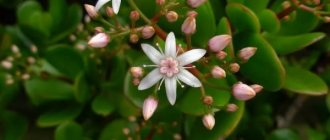Amaryllis was brought to Europe from South Africa.
It belongs to the amaryllis family and is represented by only two species. Hybrid forms and varieties of Amaryllis belladonna or beautiful amaryllis are grown in indoor culture. Dear readers!
For you, we have created communities on social networks in which useful articles and interesting ideas are published several times a day! Subscribe and receive useful content in a convenient format! The flower bulb can reach a diameter of 12 cm. Above the sword-shaped or linear pointed leaves rises a bare peduncle, crowned with funnel-shaped flowers, most often from 4 to 8.
In nature, lanceolate petals are white or pink. Cultivated varieties have a fairly rich color palette - from classic bright red to white, greenish, golden and purple.
How often does it bloom?
The plant has a pronounced period of complete dormancy, after which flowering is observed.
If we remember its origin, it becomes clear why it is observed in March - April.
At this time, the flower is in its homeland - late summer, autumn. When the end of spring comes and amaryllis rests for summer, winter has come for it.
Flowering time depends on the varietal of the flower and may occur at the end of winter or early spring. Some varieties bloom in summer or autumn.
If you organize forcing correctly, you can make amaryllis bloom at almost any desired time. But still, natural timing is preferable for this - the bulbs will be stronger, the plant itself will be healthier, and flowering will be annual and abundant. With proper care, re-blooming is possible in the same year.
Botanical information
Amaryllis (from Latin Amaryllis belladonna) is a species of herbaceous, bulbous, perennial plant of the Amaryllis family. Its main feature: the incredible beauty of the inflorescence, which can consist of one or many flowers, as well as:
- a single peduncle filled inside with soft plant tissues;
- pear-shaped bulb, about 60 centimeters in diameter;
- long leaves of dark green color, located opposite;
- varieties can be pink, purple, red or white.
Amaryllis flowering conditions
Sometimes, despite all efforts, amaryllis never blooms. To understand the reason for the failure, let’s consider all the necessary conditions for flowering. Experienced gardeners have long known that for a plant to successfully grow, conditions are necessary that are close to those found in its natural habitat.
Temperature
In the Cape Province, where amaryllis comes from, summers are hot and winters are quite cool. During the active growing season, the flower needs temperatures from 18 to 25 degrees. The difference between day and night temperatures should be minimal. When he is at rest, the temperature needs to be lowered.
Important! The minimum temperature for amaryllis at rest is +10 degrees.
Air humidity
When it is above 80%, the spread of the fungal disease stagonosporosis is possible. Therefore, the flower does not need additional air humidification. Only in extreme heat may it require spraying, but only in the morning or evening hours.
Lighting
Daylight hours during active growth are 16 hours. If necessary, use additional lighting. For a flower, bright but diffused light is preferable. It can be exposed to direct sunlight only in the morning - until 11 o'clock and in the afternoon - from 15 o'clock. At rest, amaryllis does not require light.
Location
It is chosen taking into account lighting needs. It is best if it is a window oriented to the southwest or southeast. On a south window, the flower will have to be shaded during the midday hours.
Important! To prevent the peduncle from bending, turn the pot three times a week.
Why doesn't amaryllis bloom?
There are usually two reasons for this:
- ignorance of the physiology of plant development;
- errors in care.
Let's look into this in more detail and work on the mistakes.
Not observing the rest period
Amaryllis differs from many room inhabitants in its period of complete rest.
All metabolic processes in the bulb slow down.
In preparation for rest, nutrients are transferred from dying leaves into it.
The flower needs to be prepared for this state:
- Reduce daylight hours, and then place the flower in a dark room.
- Gradually reduce the temperature.
- Reduce the number of waterings.
- Eliminate fertilizing.
After a full rest from autumn to spring, flowering will be abundant and long-lasting. Without it, the bulb quickly depletes and forms only leaves.
Wrong potty
Beginning flower growers may not realize that the wrong pot is an obstacle to flowering.
It would seem, what is the connection between the diameter of the pot and flowering? But it exists, and it is the most direct one. In a spacious pot, the plant readily produces children. We keep amaryllis in the house for spectacular flowering. And the plant blooms to produce seeds. A spacious pot stimulates vegetative propagation rather than flowering.
For this flower there is a rule: the diameter of the pot is 4 cm greater than the diameter of the bulb. Less is possible, more is not possible.
Advice! When choosing a container for amaryllis, purchase a stable pot, otherwise it may tip over under the weight of the peduncle.
Incorrect watering frequency
This is one of the common reasons for lack of flowering. At rest, the flower does not need full watering; it only needs a little moistening with a spray bottle. When moving to the windowsill it is continued.
The flower shoot has reached 10 cm - watering becomes regular. Moisten the soil after the top layer has dried slightly. The flower shoot has been cut off, but watering has not stopped.
The flower should grow leaves - they will nourish the bulb. When they begin to dry out, reduce watering. You need to water the flower along the walls of the pot; water should not get on the bulb.
Poorly selected soil
Lack of nutrients, too dense soil that does not allow moisture and air to pass through, will certainly affect flowering. The substrate for planting should include humus - 1 part, leaf soil - 3 parts.
For looseness, add perlite - 2 parts (can be replaced with coarse sand). Acidity is strictly monitored; its values should be within 6.0-6.5. If you do not have the skills to prepare nutrient mixtures, it is better to buy ready-made soil intended for amaryllis.
Important! The prepared soil needs to be sterilized.
Poorly chosen place for a flower
If there is not enough light, the plant may postpone flowering until better times. Direct sunlight is stressful for amaryllis. He will be uncomfortable in a draft and with frequent temperature fluctuations. All this must be taken into account when choosing a place for a flower.
Problems with the bulb
It must be remembered that even healthy planting material will produce flowers only in the third year. When the bulb is affected by disease, the plant will no longer be able to develop normally. Lack of flowering is observed if:
- there are too many children - we separate them from the mother’s bulb;
- improper care has led to a decrease in the size of the bulb - we ensure a full period of rest;
- it froze due to non-compliance with the temperature regime;
- improper storage during the dormant period;
- planting too deep.
When purchasing, you need to carefully check the planting material. For prevention, purchased bulbs are treated with a fungicide solution for half an hour.
Problems with fertilizer
Without proper nutrition there will be no flowers. The plant needs to regain its strength. To do this, it is fed every ten days while it is actively growing. Fertilizers for bulbs are suitable; dilute them in water according to the instructions.
Growing container
The pot must be narrow and tall. It is very easy to understand whether the width of the pot will fit or not. If two fingers fit between the walls and the bulb, then the width is sufficient. It is worth remembering that amaryllis has a fairly heavy peduncle and large flowers, so the container in which it is grown must be stable. If the pot is too spacious, then young shoots will begin to appear intensively in it. Therefore, it is better to choose a cramped space for this plant, in which an adult flower will begin to bloom much faster.
Care during flowering
Amaryllis flowering lasts up to 20 days. All this time, regular watering is carried out, not forgetting to pour out excess water from the pan. Spraying is not carried out at this time - spots may appear on the petals. Experienced flower growers advise cutting off the first arrow after one flower blooms. It will stand in the water for a long time, but a second one will appear to replace it.
Advice! Usually there are up to 3 flower arrows on amaryllis, but it is better to break off the third one immediately so as not to weaken the plant.
The pot is turned several times a week - then the peduncle will not bend.
Reproduction
The culture is propagated in two ways:
- seeds;
- vegetatively.
To obtain seed material, cross-pollination is carried out. This is not difficult to do. Pollen is transferred from one flower to another. After opening the fruit boxes, the seeds are collected, which remain viable for 1.5 months.
Propagation by seeds
The containers are filled with nutrient soil. The soil is well moistened. The seeds are planted 5 mm deep and covered with polyethylene. When two true leaves appear, the seedlings dive. The color is formed after 7 years.
When propagated vegetatively, plants retain varietal qualities. Flowering begins in the third year.
Reproduction methods:
| Way | Carrying out |
| Children's department | Planting small rooted bulbs. Initially, the foliage is not pruned: nutrients accumulate and are preserved. |
| Bulb division | The selected planting material is divided into parts. The sections are sprinkled with ash. The parts are placed in sand and kept for 30 days at a temperature of +27 °C. With the appearance of two true leaves, they are planted in a high-quality substrate. |
The poisonous amaryllis bulb can cause skin irritation, so wear protective gloves when working.
How to care at different times for flowering?
This plant can be forced to bloom at any time by creating an artificial dormant period. If it falls in November-December, the monthly care for the plant will be as follows.
January
If the plant is dormant, no care is required. Only every week you need to spray the soil with a spray bottle. At the end of January it’s time to put pots of bulbs on the windowsill. If they have been stored in the refrigerator, it's time to plant them in pots.
February
The sun woke up the bulbs. They are slowly waking up, a flower arrow has appeared. At this time, it is enough to occasionally spray the soil in the pot. If the length of the arrow goes beyond 10 cm, water and feed according to the usual scheme.
March
The most important period in care is the time of flowering. Watering and fertilizing should be regular.
April
Flowering ends. It's time to trim the flower shoot. It is good to feed the plant to restore strength.
May
If necessary, you can replant the flower or plant it in the ground when the threat of frost has passed and the temperature is not lower than 18 degrees. Water and feed.
June
Continue watering and fertilizing.
July
The care is the same. Do not forget to protect plants from the scorching heat.
August
Continue to water and feed. At the end of the month, it’s time to move the flower into the apartment, if it grew on the street - cold weather may come suddenly.
September
It's time to prepare for winter rest. Gradually reduce watering and remove fertilizing.
October
By the end of the month they stop watering. Remove completely dried leaves.
November
At the beginning of the month, the flower is transferred to a cool and dark room. Spray the soil in the pot weekly.
December
A state of deep peace. No maintenance required other than spraying
Typically, such care is needed for a flower if a dormant period is created artificially. In nature, it falls in July and August, and the care schedule shifts accordingly.
Where to store the bulb in winter?
The bulbs should overwinter in a dark, cool place, but this is not easy to find in apartment conditions. The balcony is not very suitable for wintering, especially an open one, because there the bulb will freeze and die.
The best option is storage on the bottom shelf in the refrigerator. Every two weeks it is necessary to check the condition of the bulbs. If there is no free space there, then you can simply leave the bulb in the flowerpot.
Before placing the onion in the refrigerator, wrap it in a napkin or toilet paper.
In mid-February, amaryllis should be taken out of the refrigerator and forced to grow.
Answers on questions
Many gardeners often have questions about flower care. Let's try to answer the most frequently asked questions.
Why doesn't it bloom, but only produces leaves?
There may be several reasons:
- a baby was planted that blooms only after 3 years;
- too spacious pot or deep planting;
- the rest period is not observed;
- watering the flower before the arrow has grown to 10 cm;
- improper watering, light or temperature conditions;
- lack of nutrition.
What to do with the bulb after flowering?
If there is a need, it can be transplanted. Continue care until the leaves wither.
What to do with the arrow after flowering?
When it begins to wither, it is cut off.
Is it possible to replant a flowering one after purchase?
It is better to wait until flowering ends. The soil of the purchased flower does not absorb moisture well, so you need to pay special attention to watering.
Proper watering and fertilization
Around the end of the summer period, amaryllis comes out of dormancy. At this time, it needs to be moved to a warm room and planted in nutritious soil. It is necessary to start watering abundantly and fertilizing periodically. But this must be done carefully, not to overdo it with fertilizing, otherwise the amaryllis will begin to grow leaves and the problem will arise that the plant does not bloom. When the flower comes out of dormancy, you need to water it in small portions. And when the peduncle grows by about 7-8 centimeters, you need to increase the volume of water for irrigation. It is necessary to moisten the soil only with filtered or settled water, or slightly heated water. Fertilizers need to be applied only when the peduncle reaches 10 centimeters. It is necessary to feed once every 10 days. It is best to fertilize with organic and mineral fertilizers, which must be alternated. Mullein can be used as an organic fertilizer, which must be diluted with water in a ratio of 1 to 10. With such feeding, the bush usually blooms profusely and intensely.
Common mistakes
The most common mistake is not observing the rest period or switching to it too abruptly. The plant must be prepared gradually. Sometimes the wrong place is chosen for a plant, the temperature regime is not observed, and it is planted in the wrong soil.
If you water too much, the roots may rot. Lack of moisture will not allow amaryllis to bloom and develop well. Some gardeners start watering when the arrow just hatches, and as a result they do not get flowering, the plant grows leaves.



